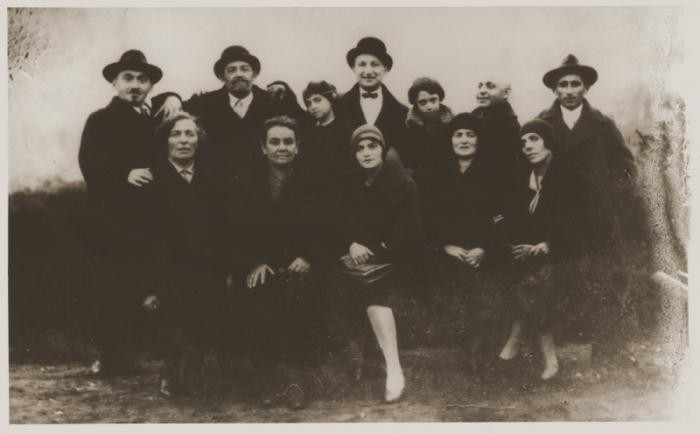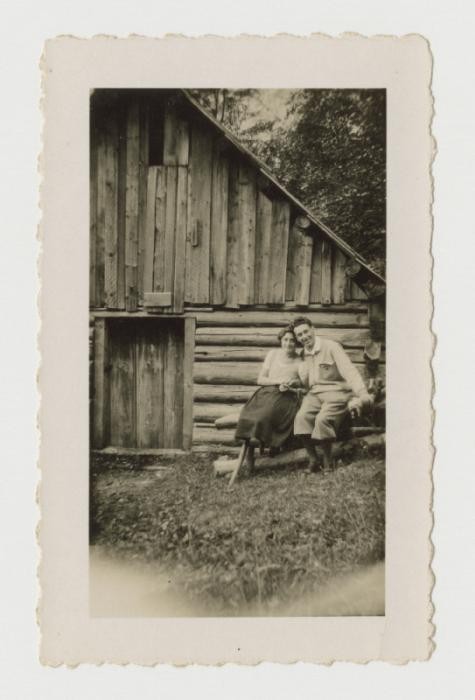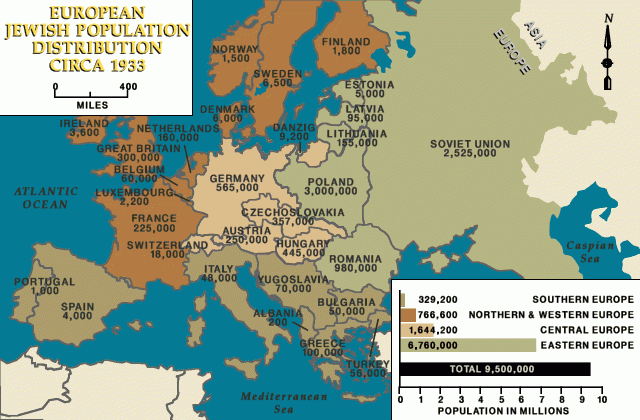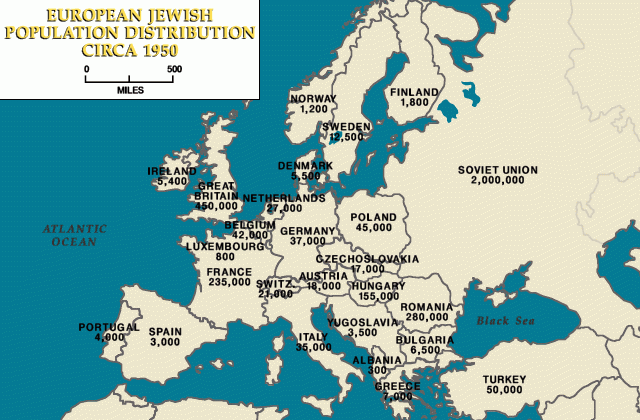
Remaining Jewish Population of Europe in 1945
Before the Nazi takeover of power in 1933, Europe had a vibrant, established, and diverse Jewish culture. By 1945, most European Jews—two out of every three—had been killed.
Six million Jews died in the Holocaust. Jewish communities across Europe were shattered. Many of those who survived were determined to leave Europe and start new lives in Israel or the United States. The population shifts brought on by the Holocaust and by Jewish emigration were astounding.
According to the American Jewish Yearbook, the Jewish population of Europe was about 9.5 million in 1933. In 1950, the Jewish population of Europe was about 3.5 million. In 1933, 60 percent of all Jews lived in Europe. In 1950, most Jews (51 percent) lived in the Americas (North and South combined), while only a third of the world's Jewish population lived in Europe.
The Jewish communities of eastern Europe were devastated. In 1933, Poland had the largest Jewish population in Europe, numbering over three million. By 1950, the Jewish population of Poland was reduced to about 45,000. The Soviet Union had the largest remaining Jewish population, with some two million Jews. Romania's Jewish population was nearly 757,000 in 1930 and fell to approximately 280,000 (1950). Most of these demographic losses were due to the Holocaust, the rest to postwar emigration from Europe.

The Jewish population of central Europe was also devastated. Germany had a Jewish population of 525,000 in 1933 and just 37,000 in 1950. Hungary had 445,000 in 1933 and 190,000 in 1950. Czechoslovakia's Jewish population was reduced from about 357,000 in 1933 to 17,000 in 1950 and Austria's from about 191,000 to just 18,000.
In western Europe, the largest Jewish communities remained in Great Britain, with approximately 450,000 Jews (300,000 in 1933) and France, with 235,000 (250,000 in 1933). In southern Europe, the Jewish population fell dramatically: in Greece from about 73,000 in 1933 to just 7,000 in 1950; in Yugoslavia from about 70,000 to 3,500; in Italy from about 48,000 to 35,000; and in Bulgaria from 50,000 in 1933 to just 6,500 in 1950 (the reduction in the Bulgarian Jewish population resulted from postwar emigration). The demographic focus of European Jewry thus shifted from eastern to western Europe.
Before the Nazi takeover of power in 1933, Europe had a vibrant and mature Jewish culture. By 1945, most European Jews—two out of every three—had been killed. Most of the surviving remnant of European Jewry decided to leave Europe. Hundreds of thousands established new lives in Israel, the United States, Canada, Australia, Great Britain, South America, and South Africa.
And we were traveling criss-cross Poland looking for surviving Jews, and we found them. And sometimes these meetings were so packed with emotion that I, I lack the words to describe it, you know. Because the idea that we are really survivors couldn't sink in yet.
—Leah Hammerstein Silverstein
Critical Thinking Questions
In addition to individual lives, what else might be lost when a particular group is eliminated or decimated?
What obligations do nations or other groups have to an endangered group in another country?
What pressures and motivations may affect a nation’s choices?
How can knowledge of the events in Germany and Europe before the Nazis came to power help citizens today respond to threats of genocide and mass atrocity in the world?
How can societies, communities, and individuals reinforce and strengthen the willingness to stand up for others?
Learn about the history of the Jewish community in your country.



